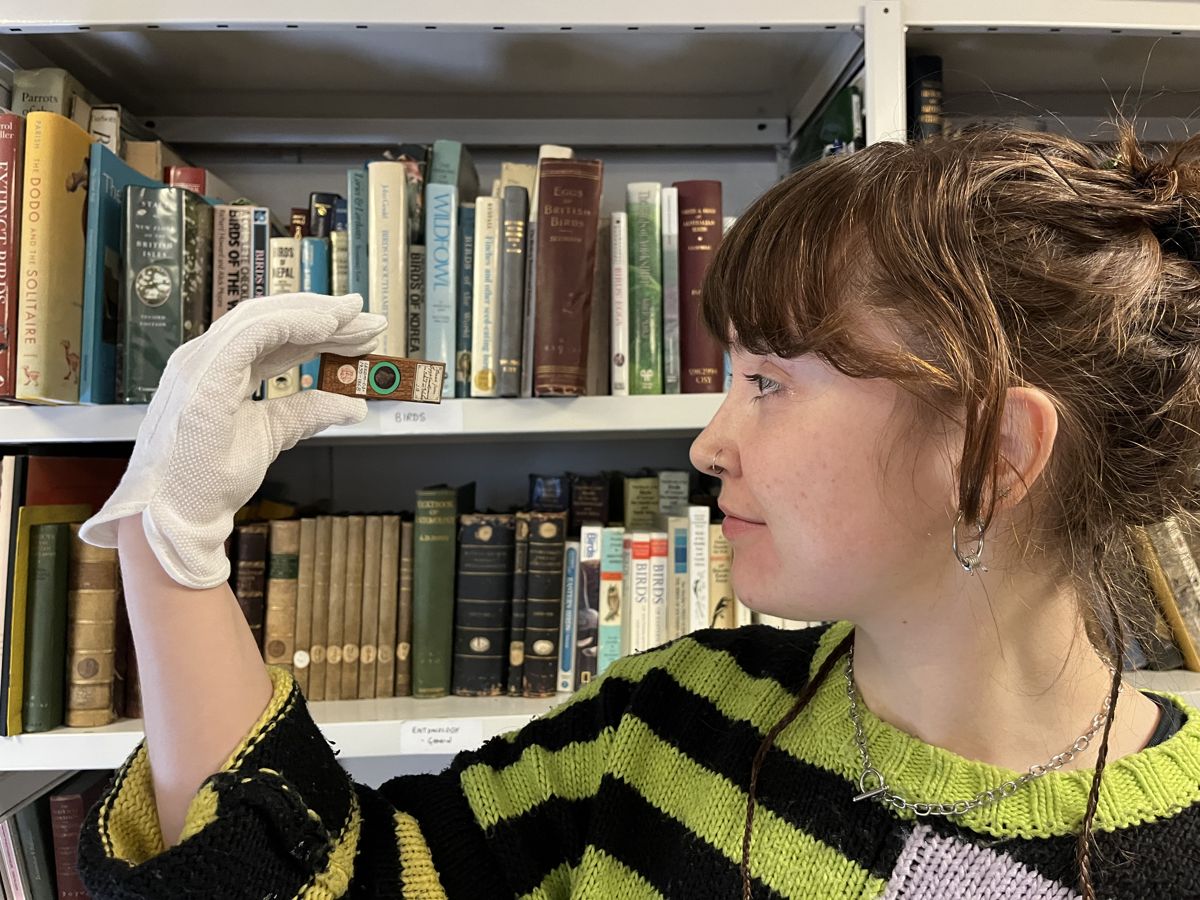A fascinating 3,000-year-old crumb of bread was unearthed at the Leeds Discovery Centre, revealing its origins from Thebes, an ancient Egyptian city. This remarkable find is part of a larger collection from a Victorian microscopist that also includes samples from the Krakatoa eruption and the groundbreaking HMS Challenger expedition.
What ancient treasure was found in the Leeds Discovery Centre?
A 3,000-year-old crumb of bread from Thebes, an ancient Egyptian city, was discovered at the Leeds Discovery Centre. This tiny artifact was part of a Victorian microscopist’s collection, which includes a wide array of microscopic historical items such as dust from the Krakatoa eruption and marine samples from the HMS Challenger expedition.
An Ancient Crumb Amidst Microscopic Marvels
In Leeds, a crumb of bread from an era long past has been found within a collection at the Leeds Discovery Centre. It was in the ancient Egyptian city of Thebes where this morsel, believed to be approximately 3,000 years old, was first unearthed. Thebes stands as a monumental site in archaeological history, boasting some of the most remarkable finds of the last century.
This tiny treasure was collected by a Victorian microscopist, whose identity remains unknown, and preserved among a plethora of other samples on slides. Recently, these slides have come to light as part of a volunteer project aimed at documenting the extensive and previously uncatalogued array.
Containing thousands of slides, this collection, housed in quaint wooden trays, span a diverse range of microscopic items. Their preservation and organization have been methodically executed, revealing not just ancient bread but a litany of other, equally extraordinary, miniature wonders.
Moments in History Captured on Slides
The collection houses more than remnants of ancient civilizations; it also contains a particle of history from a more recent, albeit destructive, event. A mote of dust from the Krakatoa eruption of 1883, which was heard over 1,900 miles away, found its resting place on the deck of the ship Arabella, anchored a staggering 1,000 miles west of the volcanic island.
Amidst the collection, there are also microscopic sea creatures, remnants from one of the most influential scientific expeditions in history—the journey of HMS Challenger. In 1872, this vessel embarked from Sheerness on the north Kent coast for a pioneering global voyage, aiming to delve into the mysteries of the deep sea for the first time.
Upon its return, the Challenger had traveled 68,890 nautical miles over three and a half years, amassing a wealth of marine samples that forever altered the course of oceanic science. Among the findings now in Leeds are orbitolites, small disc-like fossils collected off the coast of Fiji, testament to the breadth of the Challenger’s monumental discovery.
Victorian Miniaturization and Modern Cataloguing Efforts
A fascinating aspect of the collection is the inclusion of a late Victorian miniature copy of The Times newspaper. This artifact, with all its 12,500 words, requires extreme magnification to read—another example of the era’s fascination with the microscopic world.
Volunteer Stephen Crabtree, who initially joined the museum to study fossilized plants, stumbled upon these historical treasures. The slides, many created by eminent Victorian microscopists such as James Lomax, Walter Hemingway, and James Spencer, are now undergoing careful cataloguing under Crabtree’s diligent efforts.
Clare Brown, Leeds Museums and Galleries’ curator of natural sciences, comments on the project’s unexpected revelations:
“What began as a fairly routine cataloguing exercise has slowly uncovered a remarkable archive that includes some of the most important moments in scientific history. Discovering a morsel of ancient Egyptian bread was particularly surprising, and the fact we can connect the Leeds collection to bread baked thousands of years ago on a different continent is fascinating.”
The ultimate aim is to digitize and photograph the collection, integrating it into a national database for wider access by academics, experts, and the curious public.
Leeds’ Ongoing Discovery and Preservation Effort
Leeds boasts a museum collection of exceptional calibre, as evidenced by the ongoing discoveries within its confines. The city’s commitment to historical preservation and education is underscored by the words of Councillor Salma Arif, Leeds City Council’s executive member for adult social care, active lifestyles, and culture:
“Our museums play such an important part in preserving history and heritage so that visitors have the chance to learn, and engage with it for many years to come.”
Highlighting the city’s dedication to its cultural institutions, the Leeds Discovery Centre invites the public for free, pre-booked visits. Interested individuals can learn more about this repository of history by visiting the Leeds Discovery Centre website.
This article highlights the dynamic process of historical and scientific discovery that continues to unfold within Leeds’ museums. The stories encapsulated within microscopic slides serve as a bridge to the past, beckoning a future where these small wonders spark larger conversations about our world’s rich history.
- A 3,000-year-old crumb of bread from Thebes, an ancient Egyptian city, was recently discovered at the Leeds Discovery Centre.
- The crumb is part of a larger collection from a Victorian microscopist, which also includes samples from the Krakatoa eruption and the HMS Challenger expedition.
- The Victorian collection contains thousands of slides featuring a diverse range of microscopic items, including ancient artifacts and remnants of significant historical events.
- Volunteer efforts are underway to catalog and digitize the collection for broader access, highlighting its importance in scientific history.
- The discoveries at the Leeds Discovery Centre underscore the city’s commitment to preserving history and educating the public about its rich heritage.
